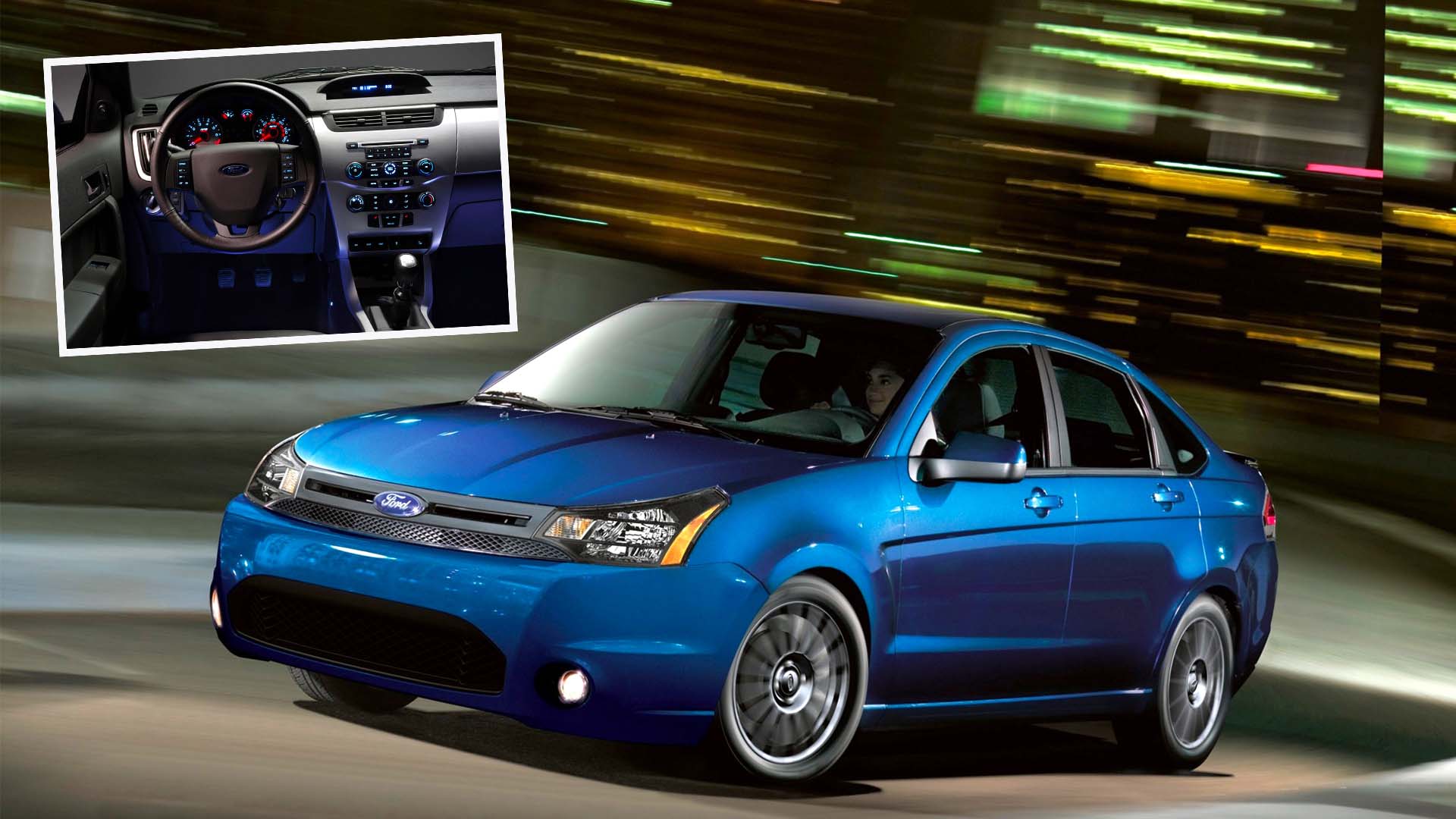

During my tenure at Car Bibles and The Drive, I’ve discussed a wide assortment of cars that possess at least teeny glimmers of enthusiastic engineering. I’ve highlighted overlooked Blue Oval gems, import tuning black sheep, and even luxury hardware that’s depreciated into a solid deal. In my everlasting quest to one-up myself in my search of overlooked good cars, as well as educate the masses about cars that genuinely deserve a closer look, I might’ve struck gold with the second-generation Ford Focus.
It seems like few people remember the short-lived second-gen Focus. It arrived on dealer lots right after the surprisingly great conclusion to the first-gen run, the first Focus ST, yet just before the great-looking, well-performing third-gen Focus that wowed enthusiasts from sea to shining sea. But rest assured, the second-gen Focus deserves as much canon as the rest of small American-market Fords with enthusiast potential.
Although I don’t have any conclusive proof, I’ll speculate that part of the reason why we don’t really see them around these days or hear about how great they were as new is due to two factors. The first is because it, unfortunately, debuted during the Great Recession. The other is because you could get into an eighth-gen Honda Civic Si or Mk5 Volkswagen GTI, both thoroughly excellent cars, for not much more money. But nowadays, when faced with a daunting used-car market that’s inflated the value of those two legends, this Focus could be an excellent, inexpensive option.
When New

The second-gen U.S.-market Focus debuted in 2008 and only lasted through the 2011 model year. It was available as a two-door or four-door, and came in a variety of trims that ranged from ultra-economy spec with the S to nicely appointed for its day in the SES and SEL trims.
It was generally regarded as a good car, though softer and less punchy than its predecessor, particularly the previous-gen’s ST trim with its torquey Mazda-sourced 2.3-liter inline-four. Like the ST, the 2008 model featured a Mazda-sourced powerplant, albeit it was now only 2.0 liters and made more than 10 less horsepower. The 2008 model had 140 horsepower and 136-pound feet of torque. It was barely better than the previous base trim’s 2.0 with 136 horsepower and not quite up to the level of the ST. Bummer.

However, according to Car and Driver, it hit 60 mph from a stop in just eight seconds and weighed just 2,688 pounds in coupe form. That’s a whole 128 pounds lighter than the previous-gen ST, and an essentially negligible 0.10-second-slower zero-to-60-mph time. It would’ve been cool if Ford retained the 2.3, at least for the higher trims, and added this lightness for a noticeable overall performance improvement. Unfortunately, that’s not how things usually work out. As far as handling limits go, the 2008 Focus was able to pull 0.79 g on the skidpad, which like its 0-to-60-mph time, was barely a downgrade from the 2007 ST’s 0.81 g.
But most importantly, the 2008-2011 Ford Focus was available with a five-speed manual transmission and featured independent rear suspension, decent front MacPherson suspension, and some neat factory styling upgrades, like spoilers, good-looking multi-spoke wheels, and bits of ground effects. This all points to great aftermarket potential.
Tunability?

Thankfully, like the previous first-gen ST, the second-gen Focus saw a decently favorable amount of investment by the aftermarket. It was no Honda Civic Si, but it still had, and still has, a good amount of potential.
Parts such as aftermarket springs and dampers, turbo kits, clutches, lightweight flywheels, swaybars, bushings, intakes, exhaust systems, brake upgrades, and alignment parts were readily available when this mildly hot compact was new on dealer lots, and some of these bits are still available from various retailers. And just like the ST, the Mazda-sourced engine was in the Mazda 3 and Mazda 5, so engine tuning is still in good supply. Fun stuff like performance camshafts are easy to come by -thanks, Fozda!
As far as in-period aftermarket-tuned examples, there don’t seem to be a whole lot out there in various publications, though there’s still some love that can be found on various forums, as well as Facebook. Motor Trend highlighted a badass build by FocusSport (now FSWerks) that they prepared for SpeedTV’s Street Tuner Challenge back in the day. Sigh, that was a great show.
Unfortunately, outside of street tuning culture, it doesn’t look like the second-gen Focus wasn’t campaigned in wheel-to-wheel racing as new, such as in Speed World Challenge.
Maybe Not Legendary, But Decent

I hate to sound unappreciative, but what us enthusiasts living in the U.S. got with a Focus badge between 2008 and 2011 wasn’t nearly as cool as what other markets across the globe got, like the U.K.’s 2009 Focus RS. I remember reading all about that monster when it first debuted and discussing at length with my friends about how jealous we were of Europe for getting such an epic piece of kit.
Still, at least we got something, which could be outfitted to be a lot cooler than most bland appliances on the road at the time. All it needs are the right wheels, a little help from the performance aftermarket, and the right exterior accents. For this reason, if you happen upon one while looking around for your next project, don’t automatically discount it, especially if it’s a well-equipped model. Since Ford made a lot of them, a high-trim 2008-2011 Ford Focus could be a solid choice. Especially considering our current insane gas prices, and used car market that’s piling premiums onto most enthusiast hardware.